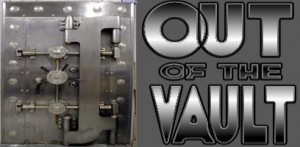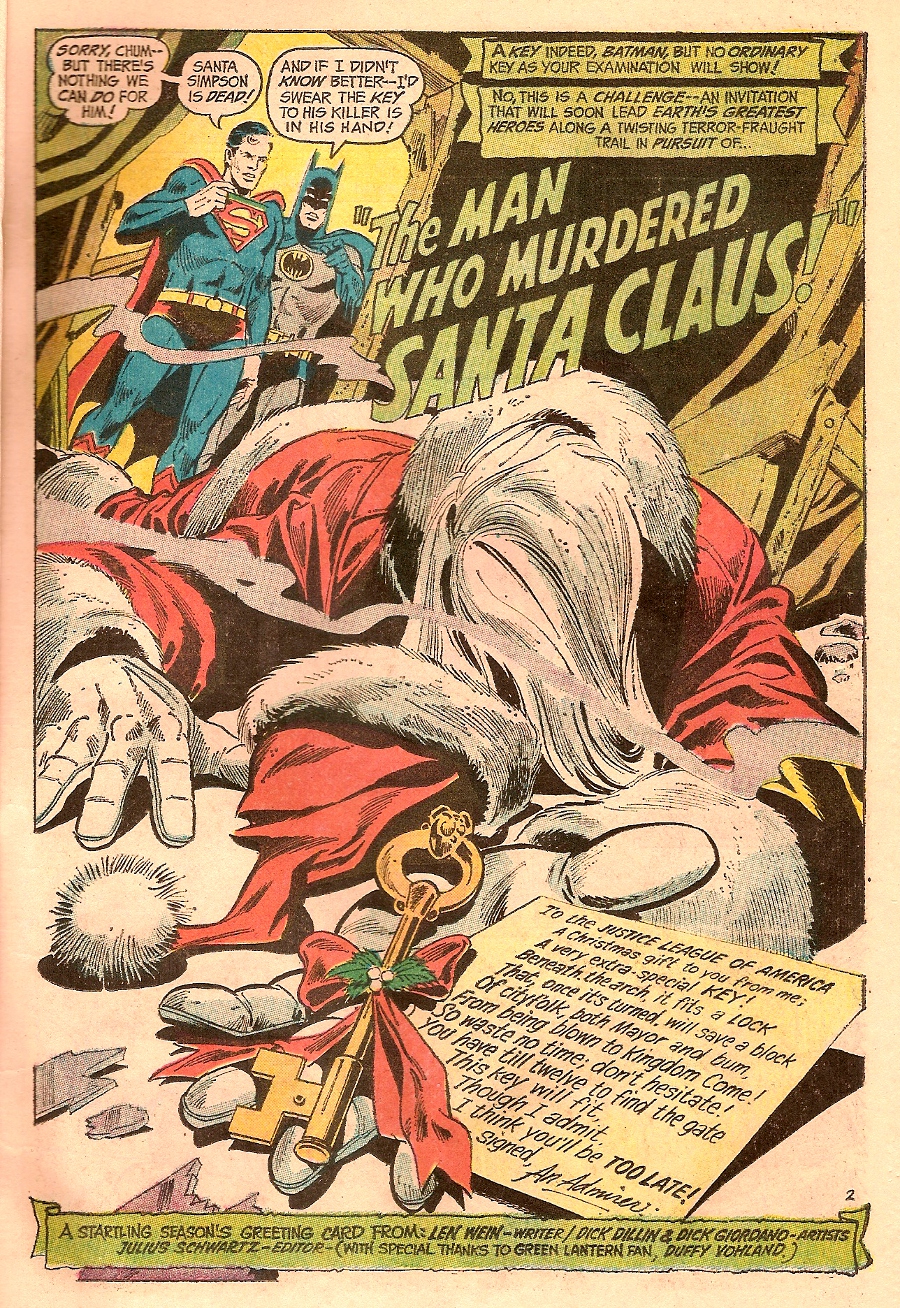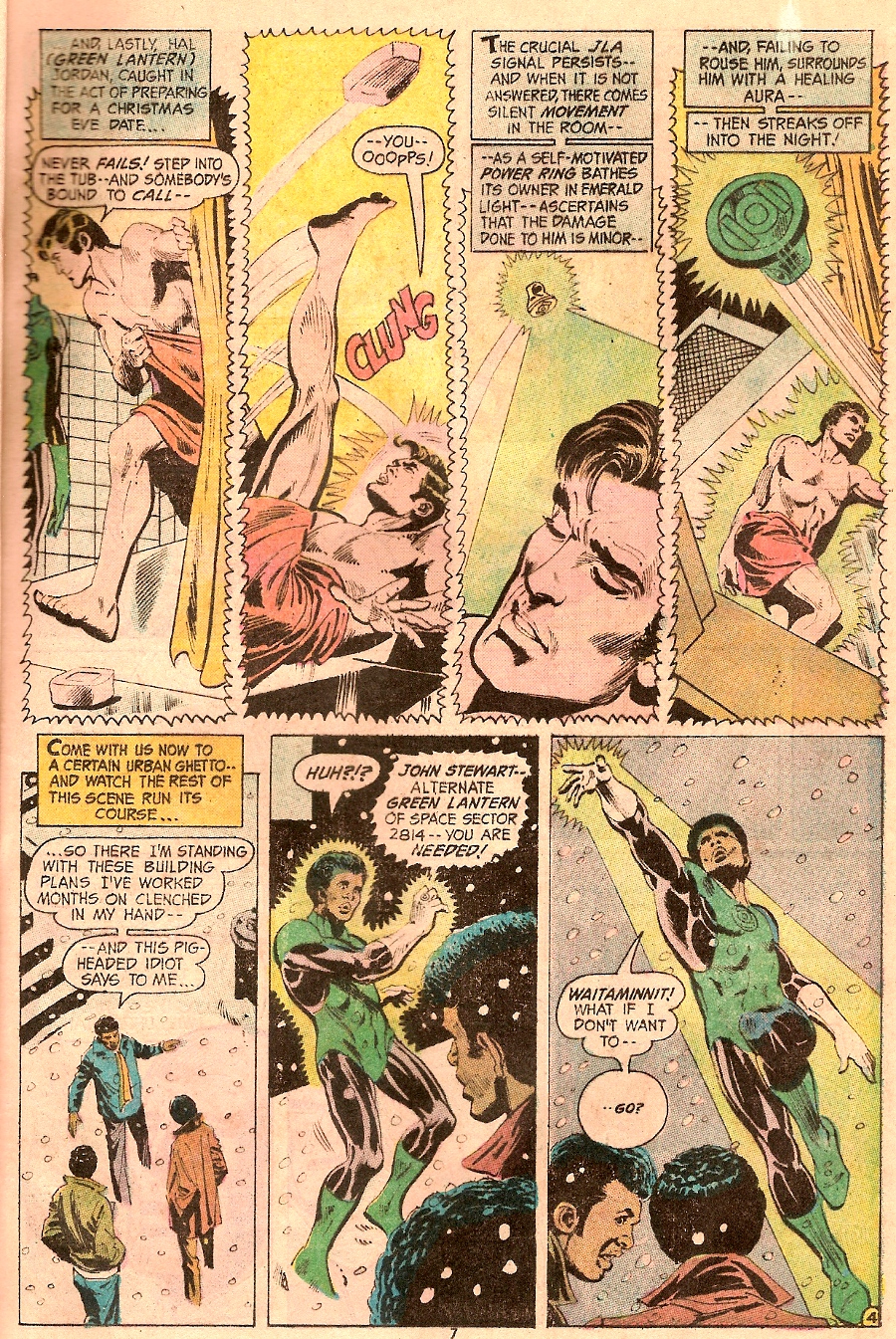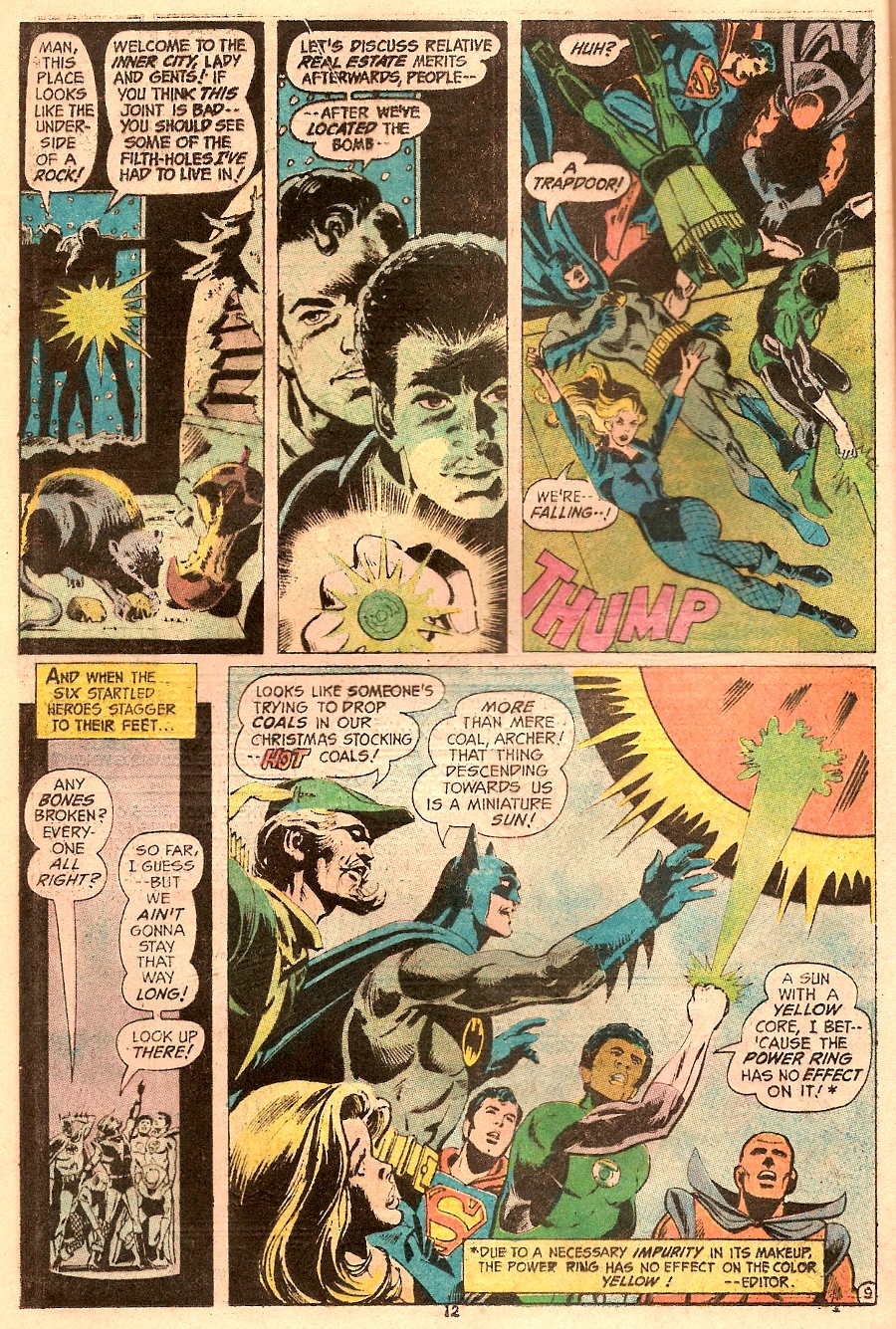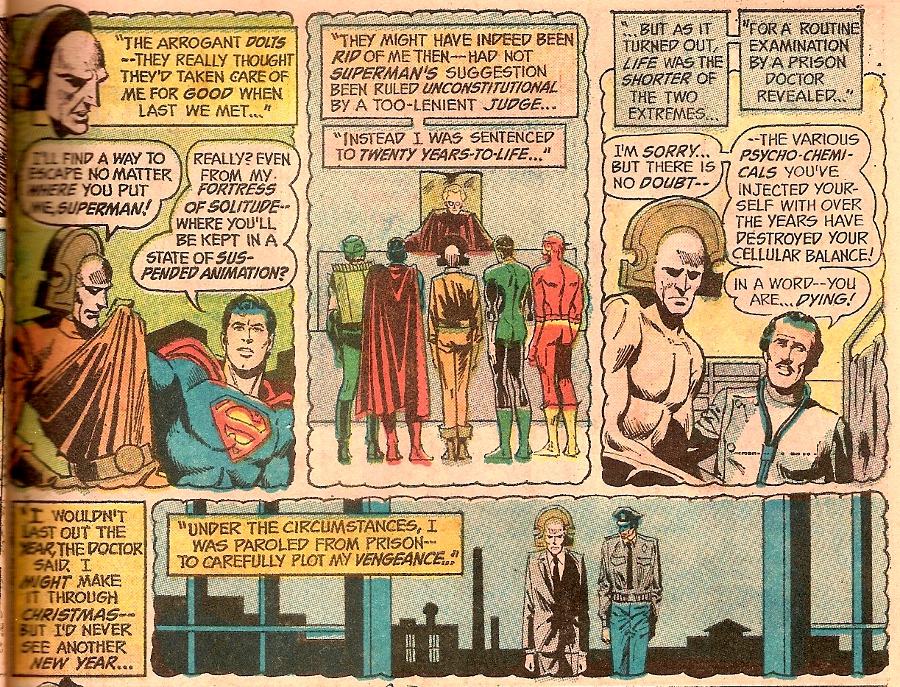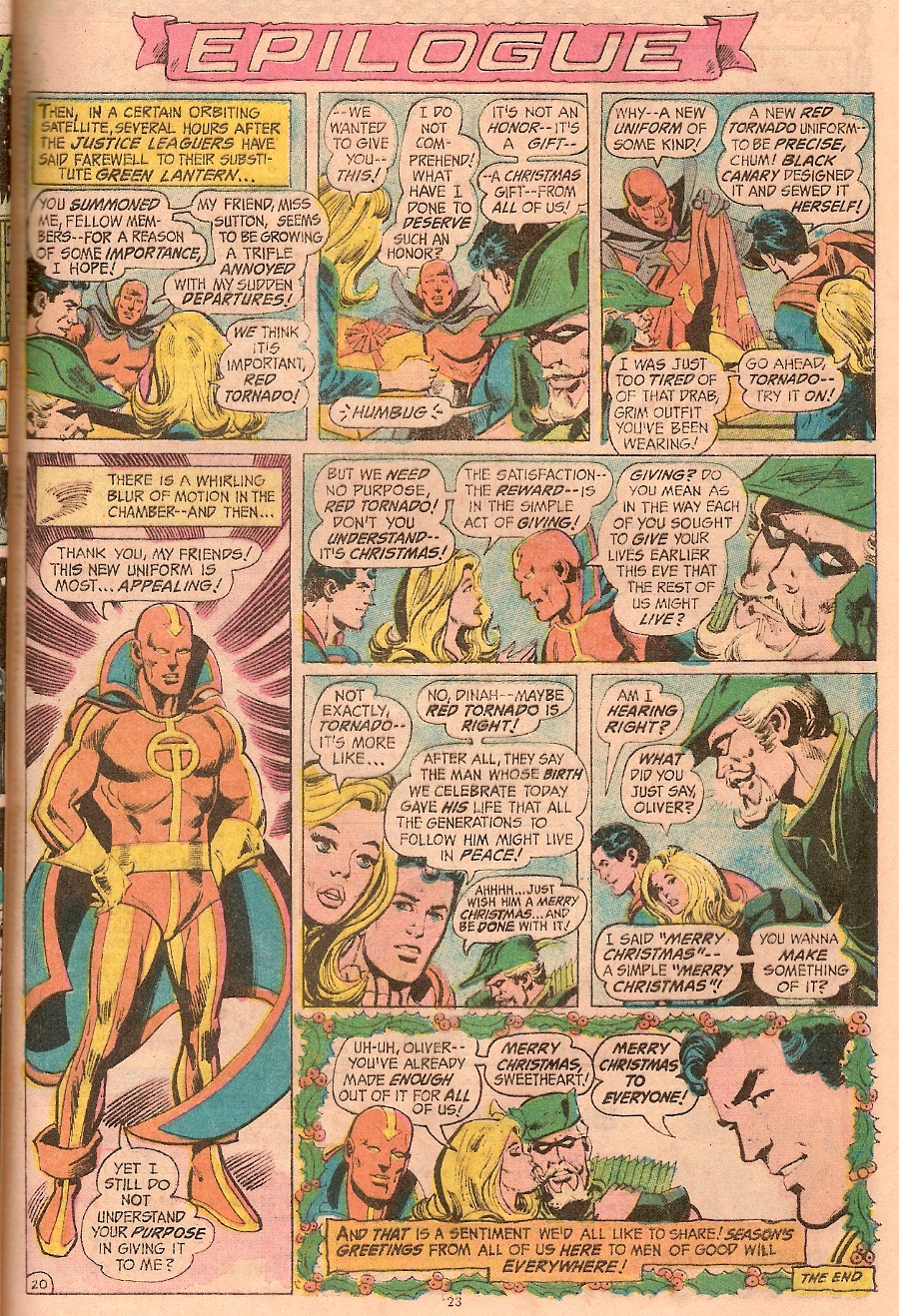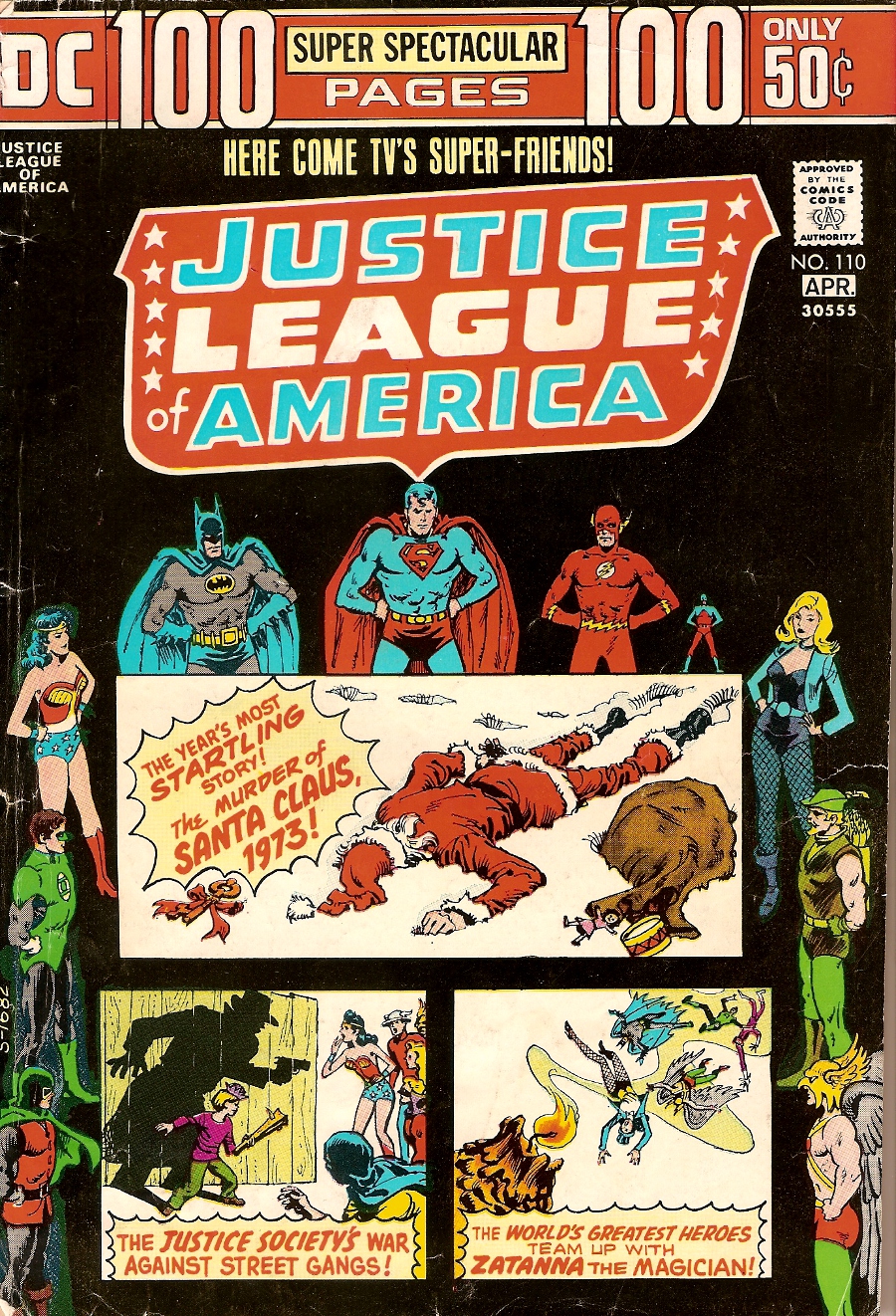 Sorry for the late update (and the missed update last week), but not only has it been hard to find a good Christmas story to cover, but the holidays in general tend to screw with my mind. I have so much less free time than usual, and even when I am free, the pressure of all the things I have to do just fuzzes my mind out so that I can’t concentrate on anything.
Sorry for the late update (and the missed update last week), but not only has it been hard to find a good Christmas story to cover, but the holidays in general tend to screw with my mind. I have so much less free time than usual, and even when I am free, the pressure of all the things I have to do just fuzzes my mind out so that I can’t concentrate on anything.
But I can’t just let the holiday go by without a comic, so here you go: Justice League of America #110, the April 1974 issue that apparently came out just before Christmas 1973, written by Len Wein with art by Dick Dillin and Dick Giordano. I won’t actually be covering the entire issue, because as you can see from the cover above, it was a 100-page Super-Spectacular (costing only 50 cents).
The Super-Spectaculars were a fixture at DC in those days, attempting to counter Marvel’s growing market share by offering more pages per product. The way they managed to afford it was by filling most of the book with reprints. Most would have only one new story, and that one was often pretty short, followed by 4 or 5 Golden and Silver Age reprints. This Super-Spectacular was different, in that it not only had a full 20-page lead story, but it only had two back-up stories–a multi-part Justice Society adventure from 1948 titled “The Plight of a Nation!” and the multi-part JLA adventure “Z As in Zatanna–and Zero Hour!” But since neither of them were Christmas stories, I’m only going to concentrate on the lead feature, “The Man Who Murdered Santa Claus!”
Batman and Superman meet to attend a charity function with a man dressed as Santa Claus, when he is killed by a bomb.
Hmm… Not only is his costume not singed in the least, but there’s a piece of paper in his hand that is similarly not singed at all. You’d think the blast would have damaged it at least a little. It’s almost as though the note was placed there after he was killed.
But neither Batman nor Superman see anyone, and Batman, the World’s Greatest Detective(TM) (not) ignores that piece of evidence (to be fair, so does the script–I think it’s just artistic carelessness). Instead, the two heroes use their Justice League communicators to summon their fellow heroes, most of whom are too busy enjoying their vacations to notice the summons. Red Tornado, Green Arrow and Black Canary all respond, however. And then there’s this guy.
If your first introduction to Green Lantern was the brilliant Justice League animated series, then you may not know that John Stewart started out as a substitute Green Lantern. He was part of a rash of Black Second-String Substitute Heroes introduced during the 1970’s by both Marvel and DC, a group that also included James Rhodes (the Black Second-String Iron Man) and Bill Foster (the Black Second-String Goliath, known as Black Goliath).
Anyway, after a couple of pages in which the other JLA members get over their initial distrust of Black Substitute Green Lantern (or BS Green Lantern, if you will), they all head off to St. Louis, which Batman has deduced from the note is where the bomb will go off. BS Green Lantern uses his ring to enchant the key so that it will glow when it gets close to the lock it is supposed to open, and then Red Tornado uses his super-speed to carry the key through the entire city (yes, Superman could probably do it faster, but you have to give the other heroes something to do).
Red Tornado gets a hit from an abandoned tenement, so the heroes gather outside. Before they can enter, they are accosted by urchins begging for spare change as if this were a Dickens story (although to be fair, New York in the 1970’s was so dysfunctional that begging street urchins may have been a regular fixture). BS Green Lantern wants to use his ring to give the kids food or something, but Green Arrow stops him by telling him the Guardians of OA won’t allow him to use the ring like that. Yes, the ultra-liberal, anti-establishment Ollie Queen, that Green Arrow.
The heroes enter the tenement and…
Yes, that’s right. They all fall in, including the three who can fly, although that last panel sort of explains why it might have happened to Superman, at least. Under the radiation of a red sun, Superman becomes just a normal person. Still doesn’t explain BS Green Lantern and Red Tornado falling in, though.
Superman volunteers to be the one to take one for the team. They fling him up into the miniature red sun, which explodes, vaporizing him. The next death trap involves a calliope spewing poison gas (yellow gas, so BS Green Lantern is once more helpless to stop it). Black Canary sacrifices herself for the team this time, at which the mysterious person running the deathtraps reports to his supervisor, the master villain behind this month’s plot. His name is The Key. You’re forgiven if you’ve never heard of him; they can’t all be Lex Luthor.
Successive deathtraps involve giant Christmas tree balls which claim Batman and Green Arrow, and giant tin soldiers (yellow) which overwhelm BS Green Lantern and Red Tornado, the final two Leaguers. However, at the last moment, they fall through a secret door into a secret tunnel.
Meanwhile, the Key is gloating over his victory (the camera angle having obscured the last-second escape). He then recounts what has happened between his last appearance in JLA #63 and now.
So that thing on his head is actually permanent and not just a goofy hat? Also, I think it’s funny that he calls the judge who ruled in his favor “too lenient.” Anyway, as he’s gloating, all of the Leaguers appear, having all been saved mysteriously at the last moment. Who saved them? Why, the Key’s chief technician, Key-Man #1, who is revealed to be The Phantom Stranger.
But The Key decides that he will have the last laugh by setting off the bomb and destroying part of the city. He activates a force field to keep the heroes from stopping him (a yellow force field, natch) and dives into a secret escape tunnel. The Justice Leaguers use the remaining moments before the explosion to evacuate the neighborhood and then…
I remember as a kid thinking that solution was pretty cheap on two levels. Number one, BS Green Lantern had certainly done a good deed, but he’d had to do some real legal hair-splitting to justify it, which I didn’t look for in a hero. Heroes did what they did because it was the right thing to do. Running in semantic circles to justify it after the fact seemed weaselly and small.
Also, the way he instantly and effortlessly not only erased the consequences, but improved on the initial situation, made the rest of the story a waste of time. After all, if the bomb’s detonation actually made things better (by giving BS Green Lantern an excuse to improve the tenements), then why had they spent 13 pages trying to stop it?
But it’s not over yet. There’s another page still to go…
Holy crap, that’s a hideous costume. I didn’t like it then, and I don’t like it much more now. It’s the striped tights which get to me. But notice that in 1974, the generic “Happy Holidays” had not yet penetrated the culture, so that in the final panel, you have Superman breaking the fourth wall and wishing all of us (like I wish all of you) a Merry Christmas.
Tomorrow’s Super Movie Monday may actually come out on Tuesday, since it is a Christmas movie. And after that, who knows?
***
Oh yeah, before I forget, one more thing. You’ll notice that this story pays a lot of attention to Green Lantern, Â both spending a full page setting up John Stewart’s inclusion and having every death trap save one feature yellow perils so that the ring doesn’t work. A glance at the credits in the splash page above includes a “special thanks to Green Lantern fan Duffy Vohland.”
I didn’t recognize the name, but I got curious, wondering if he had become one of the well-known mega-fans like T.M. Maple. So I looked him up and found several references to him, not as a fan, but as a pro. He became an artist at Marvel briefly, before dying young in 1982.

